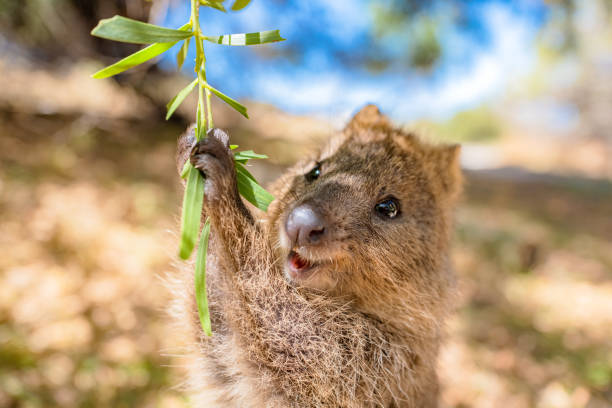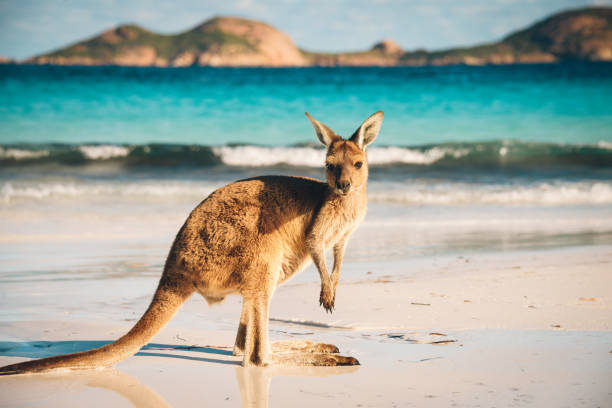Australia is known for its unique and diverse wildlife, attracting nature enthusiasts from all over the globe. An Australian wildlife journey promises encounters with exotic species that are found nowhere else on Earth. From the bounding kangaroos and cuddly koalas to the more elusive platypus and echidnas, each wildlife experience offers an intimate glimpse into the habits and habitats of Australia’s most iconic animals. Experiencing these animals in their natural environment is not only a thrilling adventure but also an opportunity to learn about the importance of conservation and the roles these creatures play in their ecosystems.
The Diversity of Habitats

Australia’s multitude of climates and landscapes harbors a wealth of diverse habitats, each supporting different arrays of wildlife. The lush rainforests of the Queensland’s Daintree are home to the flashy cassowary and the elusive tree kangaroo. In the arid outback, you might spot a thorny devil or a perentie basking on warm rocks. Coastal regions are sanctuaries for seabirds, seals, and penguins, while the Great Barrier Reef hosts an extraordinary undersea world teeming with life. Venturing into these habitats offers an education in adaptability and resilience, as each unique environment poses its own set of challenges for the animals that inhabit them.
Conservation Efforts and Sustainable Tourism
Australian wildlife journeys are not just about observation; they’re also about conservation. Travelers have the opportunity to participate in sustainable tourism initiatives that contribute to the preservation of native species. Ecotourism programs often include conservation activities such as habitat restoration or wildlife tracking. Additionally, many wildlife tours are led by conservationists who provide valuable insights into the threats facing these species and how visitors can help. By choosing responsible tour operators, visitors can ensure that their travels support local communities and the continued protection of Australia’s natural heritage.
Top Wildlife Experiences in Australia
- Kangaroo Island:
Known as Australia’s Galapagos, it’s a sanctuary for native wildlife including kangaroos, wallabies, and koalas. - The Daintree Rainforest:
The ancient rainforest provides a habitat for a wide array of species, with guided night walks offering glimpses of nocturnal creatures. - Ningaloo Reef:
Off the coast of Western Australia, visitors can swim with whale sharks and view coral spawning events. - Tasmanian Wilderness:
The rugged island state offers encounters with the Tasmanian devil and unique bird species not found on the mainland. - Kakadu National Park:
This World Heritage site is replete with wetlands hosting crocodiles, waterbirds, and ancient Aboriginal rock art.
The Importance of Guided Tours
For those keen to maximize their wildlife encounters, guided tours are invaluable. Expert guides, often with backgrounds in ecology or zoology, enhance the experience with their knowledge of animal behavior and local ecosystems. They know the best times and places to witness animal activities and can interpret the sights and sounds of the bush that might otherwise go unnoticed. Additionally, guides are instrumental in ensuring that wildlife is not disturbed during encounters, teaching visitors how ecologically sensitive interaction is paramount.
The Unspoken Connection with Nature
Beyond the tangible excitement of encountering Australian wildlife, there is an intangible aspect that leaves visitors profoundly changed. The connection made when looking into the eyes of a wild animal in its natural setting is an irreplaceable experience. It fosters a deeper understanding and respect for the natural world, reminding us of our responsibility to preserve these incredible species and their habitats for future generations. As we seek to protect these creatures, the moments we share with them become priceless memories etched into our hearts.
Conclusion
Australian wildlife journeys are more than just a checklist of sightings; they’re immersive experiences that connect travelers with the heart of the wild outback, lush forests, and vivid marine life. In choosing to embark on these adventures, we also choose to take on the role of conservation ambassadors, fostering a culture of respect and preservation for our planet’s irreplaceable wildlife. So, pack your binoculars, ready your camera, and prepare for an expedition that will not only show you the marvels of Australian fauna but will also inspire a lifelong commitment to their protection.
FAQs
- What is the best time of year to go on a wildlife journey in Australia?
- The best time can vary depending on the region and the type of wildlife you wish to see. Generally, the cooler months from April to October are ideal for observing a broad range of animals, especially in the northern parts of Australia.
- Can I interact with the wildlife during my journey?
- While some tours may offer opportunities to interact with wildlife under supervised and controlled conditions, it is important to maintain a respectful distance to ensure their well-being and safety.
- Do I need any special equipment for wildlife watching?
- Basic equipment includes comfortable clothing suitable for the weather, sturdy walking shoes, a hat, sunscreen, and insect repellent. Binoculars and a good camera with a zoom lens will enhance your experience.
- Are Australian wildlife journeys suitable for families with children?
- Yes, there are many family-friendly tours available that are educational and engaging for children. However, check the age restrictions and difficulty level of the tour beforehand.
- How do my travels contribute to conservation?
- By choosing tours that prioritize sustainable practices and contribute to conservation efforts, your travel can support habitat preservation, rescue and rehabilitation programs, and local communities dedicated to wildlife protection.
